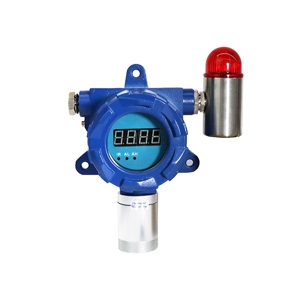As an important part of the urban transport system, basement car parks provide convenient vehicle parking. However, due to the enclosed environment, vehicle emissions and the operation of mechanical equipment, underground car parks may have a potential risk of gas leakage, posing a threat to the health of personnel and the safety of vehicles. The main function of a gas detector is to monitor the gas concentration in real time and issue an alarm when the concentration exceeds the safe range so that appropriate measures can be taken to ensure the safety of personnel and vehicles. Installing fixed Carbon Monoxide (CO) gas detectors, Nitrogen Dioxide (NO2) gas detectors and multi-gas detectors from GasDog.com in basement car parks is an important measure that effectively reduces the risk of accidents caused by gas leakage.
Which Gases Should Be Detected?
Basement car parks are exposed to a wide range of potential gas leakage risks, including Carbon Monoxide (CO), Nitrogen Dioxide (NO2), and Volatile Organic Compounds (VOCs). When not detected and controlled in time, these gases may cause serious safety accidents, such as explosions and poisoning, threatening the lives of vehicles and people in the car parks.

Carbon Monoxide (CO) is one of the most common harmful gases in underground car parks. It is produced by engine emissions and the incomplete combustion of mechanical equipment. Carbon Monoxide is colorless, tasteless, and odorless, making it difficult for people to detect its presence without specialized equipment.
Nitrogen Dioxide (NO2) is a reddish-brown gas with a pungent odor, primarily produced by the combustion process in internal combustion engines. In basement car parks, NO2 originates mainly from vehicle exhaust emissions. It is a strong respiratory irritant that can cause inflammation of the airways and reduce lung function, particularly affecting children, the elderly, and people with pre-existing respiratory conditions. Even short-term exposure to elevated NO2 levels can result in coughing, wheezing, and shortness of breath.
VOCs mainly come from vehicle exhaust, fuel oil evaporation, mechanical equipment, construction materials, and surface coatings. VOCs are an important component of air pollution and contribute to the formation of ground-level ozone and smog, adversely affecting both air quality and human health.
If there is a natural gas pipeline near the underground car park, there may be Methane leakage. Additionally, the combustion process of internal combustion engines—especially in vehicles powered by natural gas—can result in the emission of Methane. Methane is highly flammable and can pose an explosion risk in confined spaces.
The enclosed environment of a basement car park may also result in reduced Oxygen concentration, which can impair normal respiration. Low oxygen levels may lead to symptoms such as dizziness, fatigue, and shortness of breath, and in extreme cases, can be life-threatening.
Gas Monitoring for Underground Car Park
Fixed Single Gas Monitors
Gas Dog fixed single gas detectors and monitors are reliable and robust gas detection devices designed to continuously monitor a specific type of hazardous gas in industrial or commercial environments. These monitors are typically mounted in fixed locations where gas leaks or buildup may pose a safety risk.
-
Carbon Monoxide (CO) Gas Detector: Carbon Monoxide is a combustion product of petrol and diesel engines; therefore, in enclosed car parks and garages, Carbon Monoxide measurement is the international standard and fixed Carbon Monoxide gas detectors can be used to monitor its concentration.

-
Nitrogen Dioxide (NO2) Gas Detector: Vehicle exhaust and mechanical equipment in underground car parks can lead to elevated concentrations of Nitrogen Dioxide, posing a potential threat to the health of personnel. By installing fixed Nitrogen Dioxide gas detectors, the concentration of Nitrogen Dioxide in basement car parks can be monitored and controlled to ensure that air quality meets safety standards.
-
VOC Gas Detector: Vehicle exhaust, paints and other materials may release VOC, posing a threat to air quality and human health. The VOC gas detector monitors the concentration of these compounds and ensures that the indoor air quality meets the standards.
-
Methane (CH4) Gas Detector: Basement car parks can be at risk of Methane leaks, especially if there is a natural gas pipeline nearby. The use of a fixed Methane gas detector allows early detection of possible fire or explosion hazards.
-
Oxygen (O2) Gas Detector: The closed environment of underground car parks can lead to reduced Oxygen levels, which can affect breathing. Oxygen gas detectors can monitor Oxygen levels to ensure that airborne Oxygen levels are within safe limits.
Gas detectors in basement car parks are important safety equipment that provides continuous monitoring of potentially dangerous gases. Once an increase in gas concentration is detected, an alarm is triggered to alert staff. In order to minimize health risks, it is essential to use gas detection to monitor for dangerous gases in underground car parks, even if ventilation is available.
